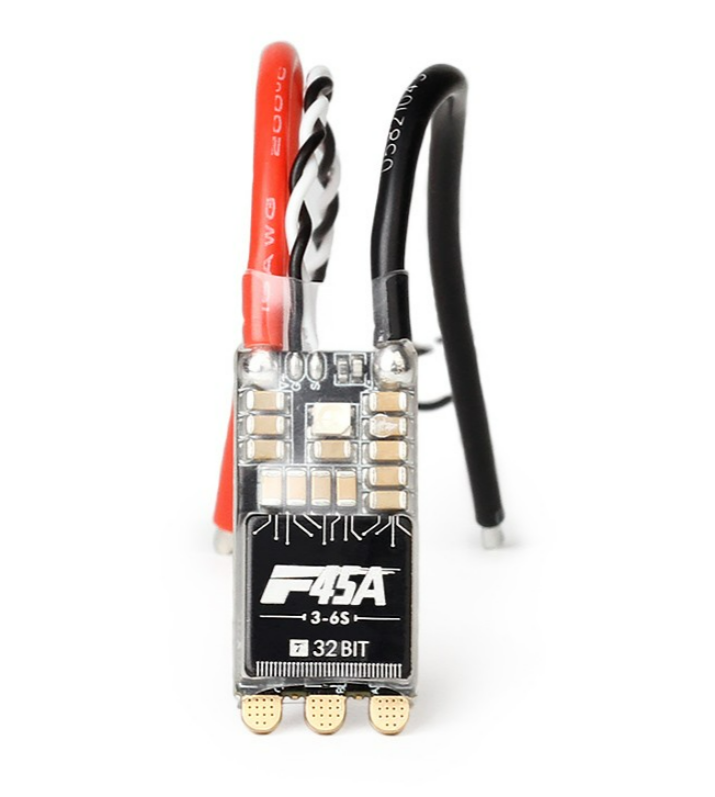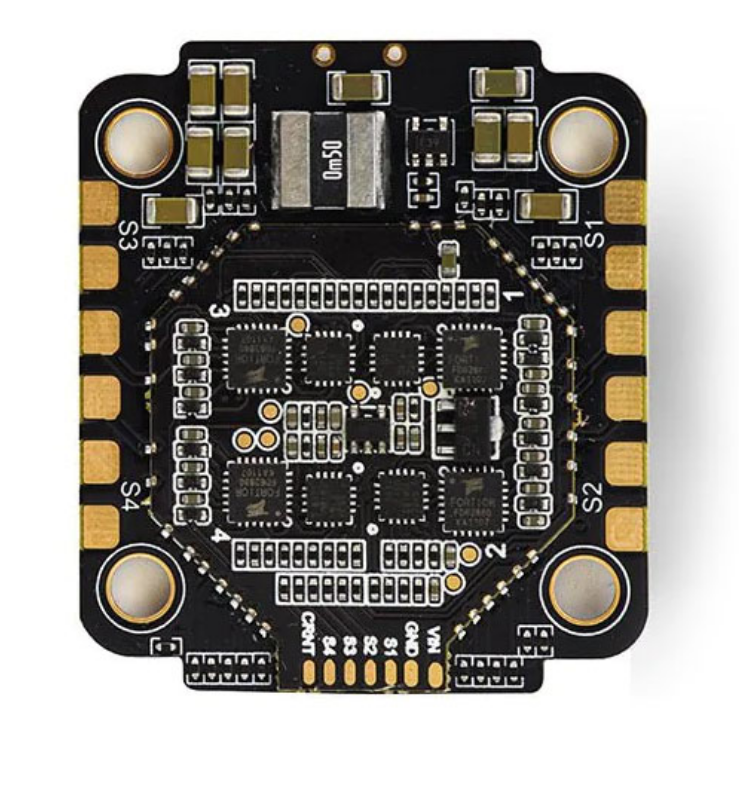ELECTRONIC SPEED CONTROLLER



Electronic Speed Controller (ESC) plays a vital role in managing the motor speed of an FPV drone. Its primary function is to receive throttle signals from the flight controller and regulate the brushless motor to operate at the desired speed. Opting for high-quality ESCs contributes to a reliable and smooth flight experience, although it’s important to note that various factors collectively influence overall performance.
ESCs are integral to drone functionality, tasked with governing the variable speed of motors. They operate on direct current (DC) supplied by the LiPo battery, translating motor signals from the flight controller into three-phase alternating current to power the motor.
They come in two main types: Singles and 4-in-1s. Singles are individual ESC units attached to the length of each arm and soldered to a Power Distribution Board (PDB) at the flight stack’s base. They are commonly used on freestyle quads due to their increased weight and layout requirements. Although singles are robust and easy to replace individually, the 4-in-1 ESCs have become popular for both racing and freestyle quads. The 4-in-1 ESC is a compact solution that requires fewer solder joints, less planning to wire up, and is often sold with a matching Flight Controller, ensuring compatibility. The drawback is that if one ESC fails, you need to disassemble the entire flight stack and replace the entire board, as all the ESCs are integrated into one unit.
Current Rating:
ESCs also have C-ratings / amp rating indicating the amount of continuous current they can handle before reaching their limit. Ratings like 20A, 30A, 40A, 50A,60A etc., are common, also providing burst ratings. The current drawn by the ESC depends on the motor-prop combo it powers.
ESC current ratings comprise two values: continuous and burst. The continuous current rating signifies the sustained current the ESC can safely handle, while the burst current rating indicates the maximum current it can manage for brief periods, usually less than 10 seconds.
ESC Firmware:
Each ESC has a built-in microprocessor with pre-installed firmware. The two most prevalent types are BLHeli_32 (open-source) and KISS (closed). BLHeli_32 is widely used. BLHeli Suite is a program that allows you to interact with your ESCs, adjusting settings such as motor direction.
ESC Protocol:
The ESC protocol is the communication language between the Flight Controller and ESC, coordinating factors like motor RPM. If you encounter terms like OneShot, MultiShot, DShot, or ProShot, these refer to generations of ESC protocols with “shot” in their names.